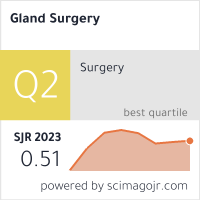AN OBSERVATIONAL STUDY ON THE EFFICACY OF A BLACK ACETIC ACID COMBINATION PEEL IN PEOPLE WITH FACE NODULOCYSTIC ACNE
Abstract
Nodulocystic acne is a severe kind of acne that can significantly lower quality of life and result in significant physical and psychological harm. Oral isotretinoin is regarded to be the best course of treatment in these conditions. Even though it has a high rate of success and has been shown to be effective in the treatment of nodulocystic acne, it may occasionally fail to achieve the desired level of disease control. There are times when the use of this drug is limited by established contraindications, recognised side effects, and the amount of time needed to reach the cumulative dose. A prospective observational study focusing on 12 patients who frequently presented to OPD with facial nodulocystic acne and had poor adherence to isotretinoin treatment due to its side effects, the medication's failure to live up to patients' expectations, or any isotretinoin use contraindications was included. As an alternate treatment, a peel made of black acetic acid, jasmonic acid, salicylic acid, and potassium iodide (the "black peel," Theraderm) was applied topically over the course of three treatment sessions spaced by two weeks. After three "black peel" sessions spaced two weeks apart, there was a noticeable reduction in nodulocystic lesions. Out of the 12 patients, 50% responded very well, 40% responded well, and none did not respond at all. A difference between the pre-treatment and post-treatment ISGA scores of 3.50 and 0.40 (p 0.001) was found.





